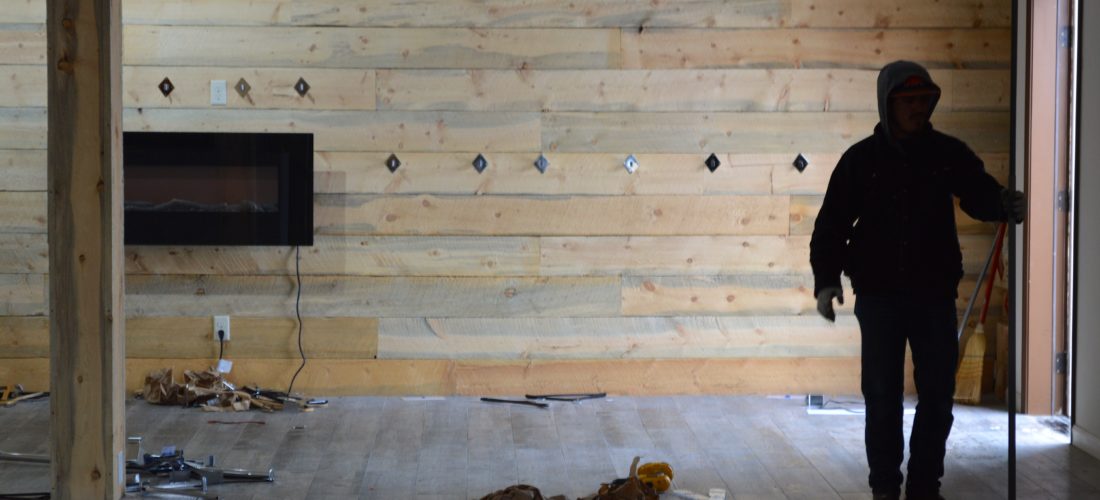In the Kansas City area, hospital networks are deploying different strategies to expand their emergency footprint. Saint Luke’s Health System recently confirmed plans to open a new micro-hospital near the BluHawk development in Overland Park, just across from an emergency department Shawnee Mission Health opened in February.
“It’s designed for quick service. Our goal is to have you in and out of the hospital, or in a hospital bed, in 45 minutes,” said Bob Bonney, senior vice president of nonacute services and business development for Saint Luke’s. “The staff themselves like the facility. It’s laid out well, very responsive to the patient.”
With micro-hospitals popping up in several states — Colorado, Texas and Indiana — Kansas is seeing its fair share of proposals. The seven- or eight-bed emergency rooms are staffed by board-certified emergency physicians and include radiology and pharmacy services as part of a one-stop shop.
To date, Saint Luke’s has confirmed plans for four of the tiny facilities throughout Johnson County, including another Overland Park micro-hospital and one each in Leawood and Roeland Park. Bonney said the hospital network was evaluating other locations on the Kansas side but did not have plans to expand across the state line.
“Missouri is a certificate-of-need state, which is very difficult to navigate, so our focus is on the Kansas side,” he said of the regulation that requires medical facilities to prove a public need and get approval before starting a new project. “You want to be in areas with growth, that are populated enough to support these facilities. We also want to be in the areas where our patients are.”
Why go micro?
The micro-hospital model is less expensive to build than a traditional hospital, and it could help systems manage patients more effectively. The hospitals cost $7 million to $30 million to build and have small overhead, said Richard Bonnin, communications director for Emerus, a Texas-based micro-hospital operator. Most range between 15,000 and 50,000 square feet, with a few inpatient beds.
“Our micro-hospitals are an innovative way to bring new service offerings to smaller markets where it does not make sense to open a full-service hospital, but where there is a need for more intensive service offerings locally than can be found at a traditional urgent care center,” Bonnin wrote in an email.
For patients and insurers, though, the bottom line would be about the same: No matter the location, an ER visit is billed as such.
“With a freestanding ER, you’re receiving emergency-level care, so the cost is typically the same,” said Robin Harrold, Shawnee Mission Health’s vice president of ambulatory network. “Sometimes, the waits are different at an established location versus a newer location.”
Both Harrold and Bonney said most patients who use these facilities walk in, rather than being transported by ambulance. In some cases, a patient with the most severe injuries might be stabilized before being transported to a trauma center.
Saint Luke’s also could turn that model on its head. Bonney said healthier patients at busy ERs could be transferred to one of the satellite locations, for a shorter wait time.
“If the patient is not as intensely sick, they could be transferred to one of these community hospitals, freeing up a bed for patients who otherwise would need to be in the hospital in a more intense environment,” he said. “Therefore we could allocate our resources more appropriately.”
If you build it …
Saint Luke’s isn’t alone in its quest to expand emergency care. HCA Midwest Health has two freestanding ERs, in Shawnee and Olathe, and Shawnee Mission Health now has two satellite campuses, in Lenexa and Overland Park.
The market is saturated with providers; according to data from the Centers for Medicare and Medicaid Services, Johnson County was in the top 25 percent for ambulance providers as of June, with an average of 379 users per provider.
But Bonney said the proximity to other hospitals isn’t a drawback. In other states, networks open micro-hospitals across the street.
“I’m aware of a health system that put one of these a mile away from their main hospital to depressurize their main ER,” Bonney said.
Despite the wealth of options, Harrold said more patients were filling Shawnee Mission Health’s emergency rooms.
“With the proliferation of freestanding emergency departments, we haven’t seen our ER volume go down,” she said. “We’ve seen growth in both locations.”
In 2016, Harrold added, Shawnee Mission Health saw an increase in ER visits between its main hospital, Shawnee Mission Medical Center, and its Prairie Star location.
“The community is getting to know us,” she said. “It’s a distance from our main campus so it allows us to expand geographically.”
The Prairie Star model also is unique in that it houses primary-care physicians and other clinical specialists across from the ER. This allows for a one-stop shop for lab work, primary care and emergency services.
“All of the health systems are looking for access points,” Harrold said. “Co-locating physicians, that’s a model most of us have shown some interest in. You’ll continue to see that kind of thing grow.”
Originally published in the Kansas City Business Journal, March 9, 2017


